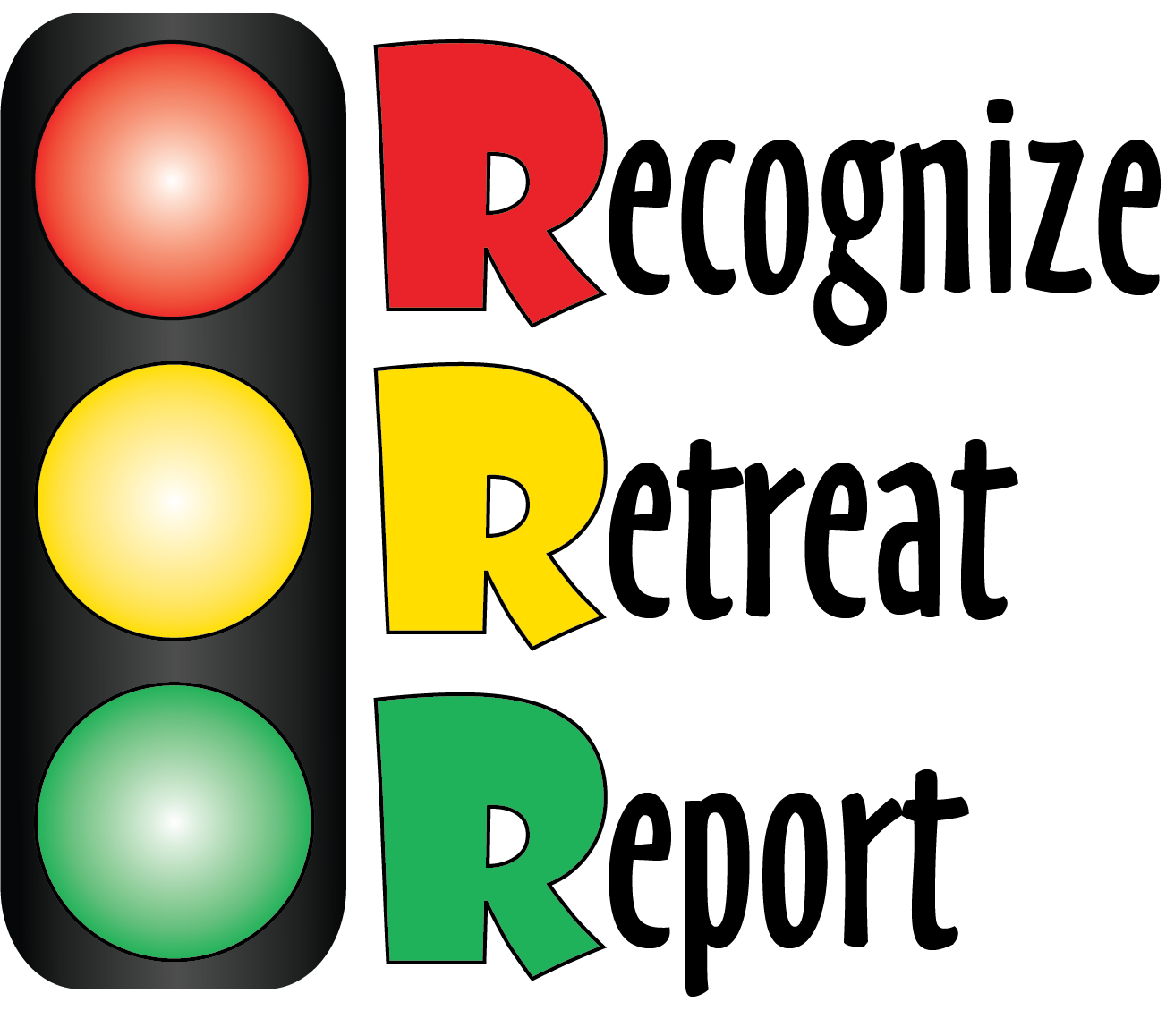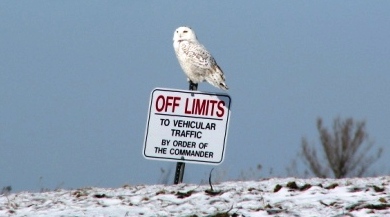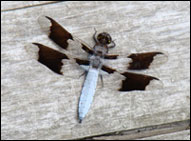WILDLIFE VIEWING & NATURAL HISTORY
- Fort Drum Regulation 420-3 Hunting, Fishing, & Other Outdoor Recreation (Unofficial Version effective & updated 4 Sep 2024 -- 18 pages).
- Fort Drum Regulation 420-3 Hunting, Fishing, & Other Outdoor Recreation (Official Version effective & updated 4 Sep 2024 -- 28 pages with summary of changes).
 Explosives Safety Education Program - Recognize, Retreat, & Report Unexploded Ordnance
Explosives Safety Education Program - Recognize, Retreat, & Report Unexploded Ordnance- Birds of Fort Drum brochure (2018)
- Birding on DoD Lands: Fort Drum, NY in Winging It
- A Brief Guide to Birding Fort Drum, NY in Kingbird
- American Woodcock on Fort Drum in Northeastern Naturalist
- Bats of Fort Drum brochure (2018)
- Canids of Fort Drum brochure (2018)
- Snakes of Fort Drum brochure (2018)
- Turtles of Fort Drum brochure (2018)
- Frogs and Toads of Fort Drum brochure (2018)
- Butterflies of Fort Drum brochure (2018)
- Crayfish of Fort Drum brochure (2018)
- Mussels of Fort Drum brochure (2018)
Wildlife Viewing on Fort Drum
 Bird watching or other wildlife viewing and photography is allowed on Fort Drum and normal access procedures apply.
Bird watching or other wildlife viewing and photography is allowed on Fort Drum and normal access procedures apply.
Fort Drum was featured in an article titled Birding on DoD Lands: Fort Drum, NY in the July/August 2006 newsletter of the American Birding Association and in an article entitled A Brief Guide to Birding Fort Drum, New York in the December 2006 issue of The Kingbird, a quarterly journal of the New York State Ornithological Assocation.
In 2008, Fort Drum began sponsoring a guided birding trip in the Training Area in conjunction with World Migratory Bird Day. The field trip is usually held the Saturday of Memorial Day weekend. Pre-registration is required.
Wildlife viewing reports have been compiled by Fort Drum biologists on a semi-regular basis. Below are the past wildlife viewing reports:
- Wildlife Viewing Reports in 2008

- Wildlife Viewing Reports in 2009
- Wildlife Viewing Reports in 2010
- Wildlife Viewing Reports in 2011
- Wildlife Viewing Reports in 2012
- Wildlife Viewing Reports in 2013
- Wildlife Viewing Reports in 2014
- Wildlife Viewing Reports in 2015
- Wildlife Viewing Reports in 2016
- Wildlife Viewing Reports in 2017
- Wildlife Viewing Reports in 2018
Fort Drum Flora & Fauna
Fort Drum has a wide variety of habitats and associated wildlife. Various surveys have been conducted and the information below is the most current related to flora and fauna on Fort Drum (and also included in the latest version of the Integrated Natural Resources Management Plan.
There have been 1,020 plant species recorded on Fort Drum. In general, floristic surveys have been limited and additional species continue to be documented.
There have been 49 mammal species recorded on Fort Drum. See the NYSDEC web site for more information about some of the mammals of New York State. See the Bats of Fort Drum brochure (2018) to learn about the 9 bat species found on Fort Drum and NYS. See the Canids of Fort Drum brochure (2018) to learn about the coyote, red fox, and gray fox commonly seen in the Cantonment Area as well as the Training Area.
 There have been 252 bird species recorded on Fort Drum. A Birds of Fort Drum brochure (2018) is also available. Fort Drum is listed as an Important Bird Area by the New York Audubon Society. See the NYSDEC web site for more information about the birds of New York State.
There have been 252 bird species recorded on Fort Drum. A Birds of Fort Drum brochure (2018) is also available. Fort Drum is listed as an Important Bird Area by the New York Audubon Society. See the NYSDEC web site for more information about the birds of New York State.
There have been 12 reptile species recorded on Fort Drum. There are NO venomous snakes native to Fort Drum--see the Snakes of Fort Drum brochure (2018) to learrn about the 8 non-venomous snakes that live on Fort Drum. See the Turtles of Fort Drum brochure (2018) to learrn about the 4 turtles that can be found on Fort Drum. See the NYSDEC web site for more information about some of the reptiles of New York State.
There have been 18 amphibian species recorded on Fort Drum. See the Frogs and Toads of Fort Drum brochure (2018) to learrn about the 10 frogs and 1 toad that can be found (and heard) on Fort Drum. See the NYSDEC web site for more information about some of the amphibians of New York State.
There have been 45 fish species recorded on Fort Drum. See the NYSDEC web site for more information about some of the fish of New York State.
 In general, there have been no comprehensive invertebrate surveys conducted on Fort Drum except for crayfish and mussels. Dragonfly surveys occurred in 2007-2008 as part of the New York Dragonfly and Damselfly Survey. Pollinator surveys have also been conducted. Many species have been documented opportunistically and lists of insects, millipedes, spiders, crustaceans, and molluscs have been compiled.
In general, there have been no comprehensive invertebrate surveys conducted on Fort Drum except for crayfish and mussels. Dragonfly surveys occurred in 2007-2008 as part of the New York Dragonfly and Damselfly Survey. Pollinator surveys have also been conducted. Many species have been documented opportunistically and lists of insects, millipedes, spiders, crustaceans, and molluscs have been compiled.
To report an interesting or unusual wildlife sighting, please send an email (and a photo if possible) to Raymond.E.Rainbolt.civ@army.mil.
Threatened & Endangered Species on Fort Drum
Currently there are two federally-listed species on Fort Drum: the federally endangered Indiana Bat (Myotis sodalis) and the federally endangered Northern Long-eared Bat (Myotis septentrionalis). The Indiana bat was listed in 1967 and first documented on Fort Drum in 2006. The Northern Long-eared Bat was classified as a threatened species in 2015. Fort Drum works with the US Fish & Wildlife Service to conserve both species. The first 3-year programmatic Biological Assessment and Biological Opinion was completed for 2009-2011. Subsequent biological assessments/opionions have been completed for 2012-2014, 2015-2017, 2018-2020, 2021-2023, and 2024-2026.
There are 36 known state-listed wildlife species on Fort Drum including 7 endangered, 8 threatened, and 21 species of concern.
The seven NYS endangered species found on Fort Drum include: Indiana Bat (Myotis sodalis), Northern Long-eared Bat (Myotis septentrionalis), Golden Eagle (Aquila chrysaetos), Short-eared Owl (Asio flammeus), Black Tern (Chlidonias niger), Peregrine Falcon (Falco peregrinus), and Tomah Mayfly (Siphlonisca aerodromia) (pdf).
The nine NYS threatened species found on Fort Drum include: Henslow's Sparrow (Ammodramus henslowii), Upland Sandpiper (Bartramia longicauda), Northern Harrier (Circus cyaneus), Sedge Wren (Cistothayus platensis), Bald Eagle (Haliaeetus leucocephalus), Least Bittern (Ixobrychus exilis), Pied-billed Grebe (Podilymbus podiceps), and Blanding's Turtle (Emydoidea blandingii).
Other Places to View Wildlife in New York State
There are numerous places to view and learn about wildlife in New York State. Below are a few suggestions where to view wildlife within a 2-hour drive of Fort Drum:
NYSDEC Region 6 administers 20 Wildlife Management Areas (WMAs) encompassing 47,000 acres in Jefferson, Lewis, St. Lawrence, Oneida, and Herkimer counties. Perch River Wildlife Management Area is the nearest WMA to Fort Drum located approximately 5 miles northwest of the Cantonment Area.
NYSDEC has developed an Adirondacks-North Country Birding Trail including 41 locations on a mix of public and private lands throughout Clinton, Essex, Franklin, Fulton, Hamilton, Herkimer, Jefferson, Lewis, Montgomery, St. Lawrence, and Warren counties.
The Minna Anthony Common Nature Center is one of the largest nature centers in the NYS park system. The nature center is in Wellesley Island State Park in the middle of the St. Lawrence River approximately 30 miles northwest of Fort Drum off of I-81. There are 8 miles of hiking trails, 7 miles of cross country ski trails, and a particularly good place to see bald eagles in the winter months.
Indian Creek Nature Center consists of approximately 320 acres within the Upper and Lower Lakes Wildlife Management Area approximately 65 miles northeast of Fort Drum. There are 7 miles of hiking trails and several good vantage points from which to see waterfowl and other waterbirds on the Lower Lake.
Derby Hill Bird Observatory sits on a bluff overlooking Lake Ontario approximately 60 miles southwest of Fort Drum and is one of the best spring hawk-watching sites in the US.
Salmon River Fish Hatchery is open to the public during operating hours where salmon can be seen coming upriver to spawn--hatchery employees can be seen at work at certain times of the year. The Salmon River Fish Hatchery is located in Altmar, NY approximately 60 miles south of Fort Drum.
Beaver Lake Nature Center is part of the Onondaga Co. Park system. The Nature Center is approximately 80 miles southwest of Fort Drum in Baldwinsville (northwest of Syracuse).
Carpenter Brook Fish Hatchery raises trout and is open to the public during operating hours in Elbridge, NY approximately 100 miles south of Fort Drum and west of Syracuse.
The Wild Center, the "natural history museum of the Adirondacks" has various exhibits and displays indoors and outdoors. The Wild Center is in Tupper Lake, NY approximately 85 east of Fort Drum's Cantonment Area.
Montezuma National Wildlife Refuge is a federal refuge in Seneca Falls, NY approximately 130 miles southwest of Fort Drum and west of Syracuse.
Other suggestions to view wildlife in New York State:
- See the NYSDEC web site for a list of other recognized Watchable Wildlife Sites throughout NYS.
- NYSDEC administers Wildlife Management Areas (WMAs) throughout NYS. Many WMAs include exceptional freshwater wetlands--many designated as Significant Habitats and/or Important Bird Areas.
Remember: Active duty US military personnel and familly members with proper identification (CAC card or DD Form 1173) are eligible for free permits to enter federal recreation sites that charge entrance or standard amenity fees.